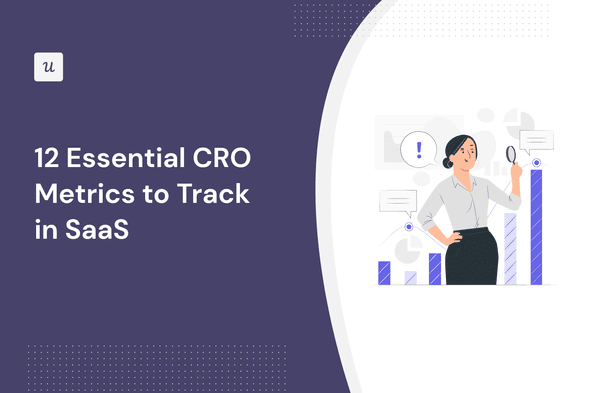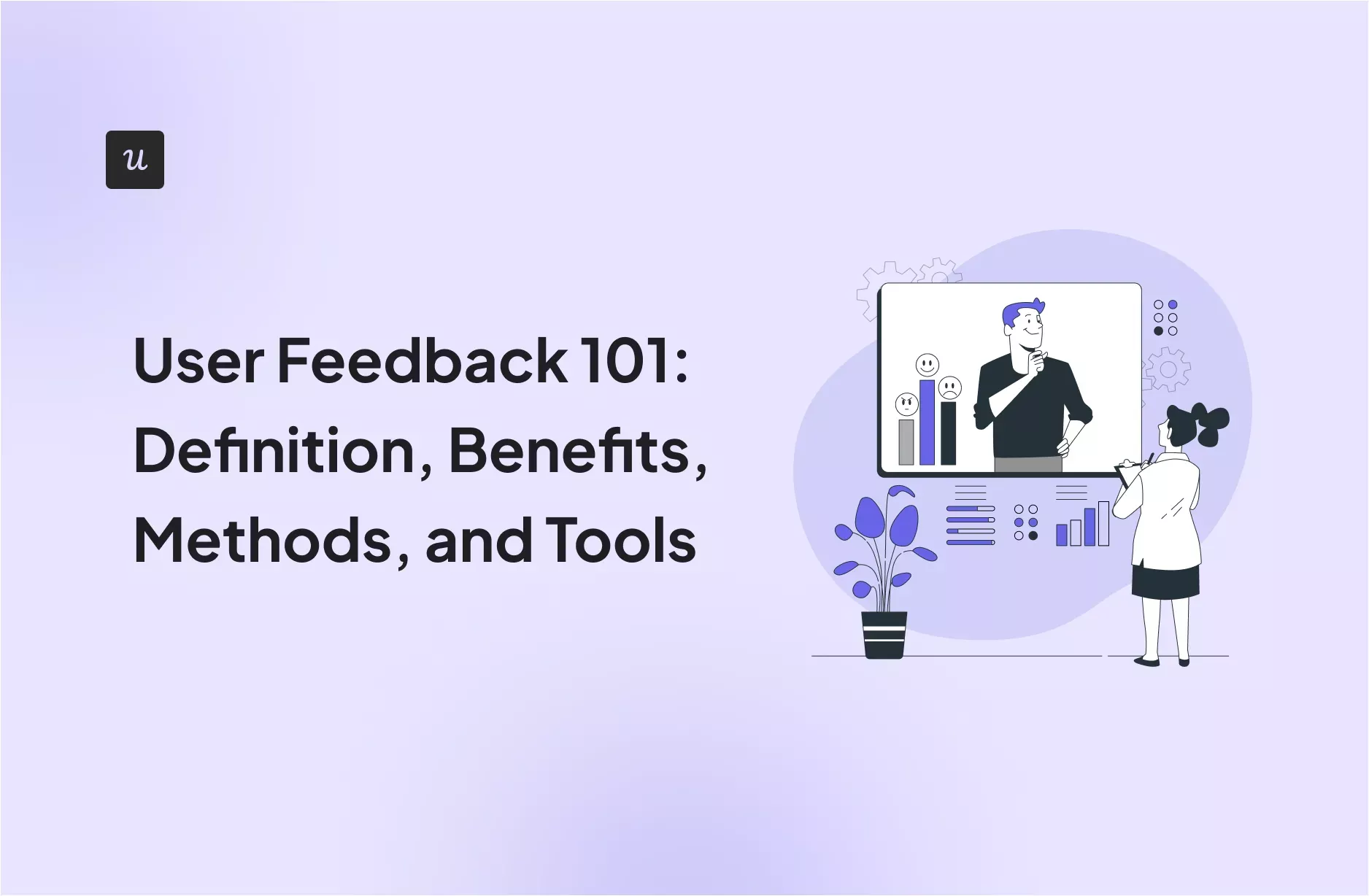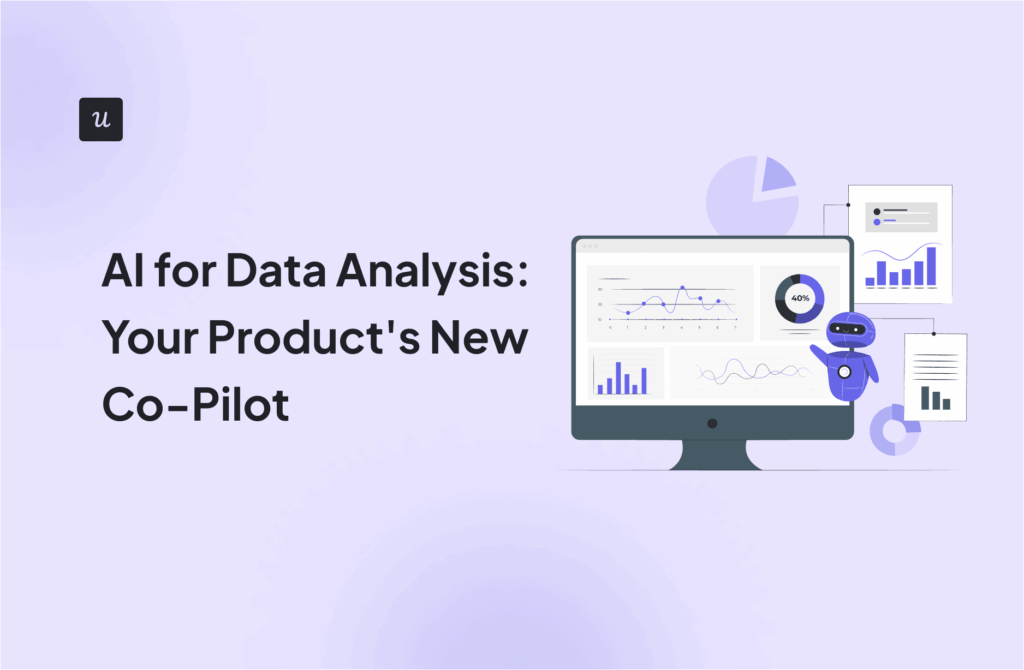
From your website to the in-product experience, there are countless CRO metrics to track. But you will get confused trying to keep tabs on everything.
This article provides 12 of the most important CRO metrics to help you measure growth at every step of the customer journey.
For each metric, we explain what it means, why it’s important, and how to measure it.
Try Userpilot Now
See Why 1,000+ Teams Choose Userpilot

What are CRO metrics?
CRO metrics are KPIs that measure the effectiveness of conversion rate optimization efforts.
Regularly tracking CRO metrics helps your business stay in the loop of user behavior and experience, arming you to make improvements and drive better conversion.
From initial awareness of your product to becoming a loyal user, the SaaS customer journey is multifaceted, involving several critical conversion points, each point with different metrics.
The major conversion points include:
- Landing page conversions
- Pricing page conversion
- Free trial conversion
- Expansion conversion
- In-app micro conversions
Key metrics and key performance indicators for measuring SaaS conversion rates
Ready to start tracking conversion across different touchpoints in the user journey?
Here are the 12 conversion metrics:
1. Digital ad click-through rate
Digital Ad CTR measures the percentage of users who click on your advertisement compared to the total number that view the ad.
This metric evaluates the effectiveness of your paid ads in engaging your target audience and enticing them to take the next step.
To measure digital ad click-through rate, divide the number of clicks your ad receives by the number of times the ad is shown.

For example, if your ad is displayed 100 times and receives 5 clicks, your CTR would be 5%.
By tracking your CTR, you can pinpoint underperforming ads and make adjustments to your marketing strategy. This will help you maximize marketing spend while achieving your campaign objectives.
2. Landing page CTA conversions
The landing page conversion rate is the percentage of visitors who complete a desired action, such as signing up for a free trial or downloading a resource.
Tracking CTA conversions helps assess how well your landing page elements, messaging, and CTA placement influence visitors to take the intended action.

3. Mobile and desktop bounce rates
Bounce rate is an important CRO metric that measures the percentage of visitors who navigate away from your site after viewing only one page, usually before they get to engage with the content on the page.
A high bounce rate shows the pages in question don’t meet user needs and expectations.
For instance, an increased bounce rate on your features page suggests the page is not effectively communicating your product’s value.
If the content on your key pages is okay and you’re still experiencing high bounce rates, one way around it is to increase page speed—slow loading time makes visitors spend less time interacting with your platform.
Also, if there’s a disparity between mobile and desktop bounce rates for the same page, that’s your cue to dig further and optimize your website to be conducive regardless of device.

Suppose your website had 1,000 visitors in a given period. Of these, 300 visitors landed on a specific page (entrances), but 100 left without interacting further with the site (bounces). Your bounce rate is (100/300)×100 = 33.33%
4. Customer acquisition cost (CAC)
Customer acquisition cost is a key metric that measures the total expense incurred in acquiring a new customer. CAC is important to measure because it helps you quantify if your sales and marketing efforts are efficient.
Calculate CAC by dividing the total cost of sales and marketing by the number of new customers acquired in a given period.

For example, if you spend $100,000 on sales and marketing and acquire 100 new customers, your CAC would be $1,000.
5. Free trial conversion rate
This metric measures the percentage of users who transition from a free trial to becoming paying customers. Many factors influence the free trial conversion rate, including product-market fit, onboarding, and the trial period.
By regularly tracking this metric, you’ll gain insights into user engagement and find ways to optimize conversions.

If your product had 500 free trial users in the previous quarter, and 100 of them converted to paid subscriptions, the conversion rate would be 100/500 = 0.2 or 20%
6. Customer lifetime value
CLV is a holistic metric that considers the long-term value a customer brings to your business. It factors in their purchasing patterns, average transaction values, and the expected duration of the customer’s relationship with your SaaS.
Understanding your CLV helps you optimize your conversion process to yield the best returns. For example, through CLV tracking, you can identify high-value customers who contribute significantly to your revenue and prioritize them when drafting your CRO strategies.

7. Interactions per visit
Every single interaction helps you better understand your visitors—whether that’s clicking a prominent CTA, watching videos embedded on your website, or sharing a blog post.
The more you know what users like about your product and what they’re looking for, the easier it gets to find ways to improve their experience and your conversion rates.
8. Feature usage
This metric measures the percentage of users who engage with specific features or functionalities of your product. By tracking feature usage, you’ll see the parts of your tool users love the most and what parts receive less engagement.
Armed with this insight, you can spot creative ways to boost user engagement and conversion.

For instance, if users are actively using a specific feature of your tool and there’s an add-on or premium version, you can trigger contextual upgrade prompts and increase your upsell conversions.
9. Revenue growth
Keep tabs on period–over-period revenue numbers to get a bird’s eye view of how your business is performing.
If revenue continues to grow, that’s a sign that you’re attracting the right customers, and a good chunk of them are moving smoothly through the customer journey.

10. Expansion MRR
While your MRR Growth rate measures overall monthly recurring revenue coming from all sources, expansion MRR calculates the increase in monthly recurring revenue resulting from existing customers upgrading their plans, adding additional features, or expanding their usage.

Use this metric if you want to strictly measure the general success of your account expansion activities.
11. NPS and CSAT
Collect qualitative feedback on the user experience to know what they think about your product and what’s motivating or hindering them from converting.
NPS and CSAT surveys work best for this.
NPS measures customer loyalty and the likelihood of recommending your product or service to others. It focuses on the long-term relationship between the customer and your brand.

CSAT tracks customer satisfaction with a specific interaction or experience, such as account renewal, support interaction, or website visit. It focuses on the short-term feelings of the customer about a particular experience.

12. Churn rate
Churn rate measures the percentage of customers who cancel their subscriptions or cease using your product over a specific period.
This metric directly impacts revenue and is a critical metric for understanding how well your company retains its customer base.

Conclusion
Wondering what’s the most important metric to track?
It’s hard to pinpoint a single one because all the CRO metrics listed above are necessary for understanding conversion and making data-driven experimentation.
But one thing you should know is that tracking your CRO metrics shouldn’t be a one-time thing. Measure regularly to keep tabs on your conversion efforts and pivot your CRO strategy where necessary.
If you’re ready to begin, Userpilot can help you track both quantitative and qualitative CRO metrics to gain a complete understanding of the product experience. Book a demo now to try it!







